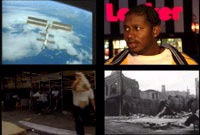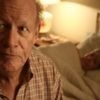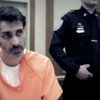
Constructive Chaos
Written by Susanna Baird | Posted by: Anonymous
Highlighting the relationship between money and politics, "State of the Union" is the fourth in Kadagian’s "Crisis of Faith" series. Each film addresses a different aspect of Western culture: the Jesus movement, the Grail myth, spirituality, and economics. Interviews with noted scholars intermingle with the sounds of classic rock and cool jazz, while the viewer absorbs a montage of images ranging from gritty cityscapes to Impressionist art. In October, Kadagian signed a broadcast deal with the Hallmark Channel, which will run the first three films in the series.
SB: You spent much of your professional life in the world of finance. What prompted the radical career shift?
Kadagian: About five years ago I found myself at a crossroads. My company had achieved a level of success that made it possible for me to explore new options. I am a jazz nut and I spent time reacquainting with my alto-sax, but playing didn’t fire me up enough for the commitment it takes to become a bona fide jazz musician. I went to Yale Divinity School and lasted a little over a month. I wanted to learn but the books I was reading and the dialogue in class did not excite me. I had always loved film and around this time I was deeply affected by several documentary films. I have found that I learn best when I build something and filmmaking offered me all of the challenges and rewards I was looking for.
SB: As a whole, "A Crisis of Faith" addresses the stressed state of the Western psyche. Did you envision four films from the beginning?
Kadagian: I really had no plan for a series. My first film ["Portrait of a Radical"] was borne out of my frustration with what I experienced after being introduced to the church. I could not relate or connect. However, the person of Jesus intrigued me. I was particularly drawn to his radical nature. I felt that the church had really tamed him in order to promote their agenda. I set out to learn for myself what was really going on.
I enjoyed all aspects of making the film so much that I decided, why not a second? "A Crisis of Faith" was most directly a counter response to my experience of materialism in America — a system I had completely bought into. The film was an attempt to question that system. "Quest for the Grail" was my attempt to understand the Western spiritual journey as expressed in a story, which is the most effective tool used throughout human history to tap into the big questions. "State of the Union" was to be a film that looked at the unholy alliance between money and politics. This dynamic impacts so many facets of our society, but the more I dug in on this subject the more I saw that the most palpable and tangible human cost was the impact this dynamic had on the underclass.
SB: Your films are obviously thought-provoking, but the imagery and music also invite a more emotional, less cerebral response on the part of the viewer. What was your goal?
Kadagian: The documentaries that affected me most deeply explored the world’s enduring religions and mythology. Films that cover these complex topics generally take an academic approach. Instead of merely educating, I wanted the viewer to have an emotional response to the subject. Humans learn at the deepest level when they experience and not just understand at the level of the intellect.
SB: Your films lend themselves to viewing situations outside the typical film venues: schools, churches, and conferences. Who do you envision as your target audience, and has that view changed as the films have been screened and reviewed?
Kadagian: As the series has made its way into the festival circuit, I have been most encouraged by the response of those who have seen our films and by how they have put them to practical use. We have colleges, worship groups of all faiths and centers for alternative learning using our films as a core tool.
The films are all broken into distinct and progressive sections, each beginning with a thought-provoking quote so that structurally as well as topically, they lend themselves very well for teaching. We have kept our prices at $19.95 and supply transcripts free of charge to any group using the film for teaching. I want to make it as easy as I can for others to experience our films.
SB: Your interviewees are scholars from various realms of modern thought. How did you choose them?
Kadagian: Over time, I have come across a number of scholars who not only excel in their respective fields, but who also have an incredible energy for their discipline and a great skill in infecting the listener with their enthusiasm. I have also found that the most gifted speakers tend to have a little of the poet in them as well as a sense of humor and wonder. People who have these qualities often speak in a way that blends more seamlessly with music and image and helps to instill and sustain the experiential component that I sought to achieve.
SB: The films contain a wealth of imagery, from the armor collection at the Met, to landscapes from Germany, to New England, to Manhattan. How was the imagery chosen? Was it chosen after you listened to the interviews, or did you have imagery in mind from the start?
Kadagian: I had a general sense of how I wanted each film to look and feel. Some images I knew needed to be in the film. However, most of the images did not come together until after the show’s dialogue was scripted and the soundtrack was laid in. Once I settled on the music, I could simply close my eyes and listen and the images would become self-evident. The hard part required my finding them, filming them and securing the rights if necessary.
Initially, I hired a cameraman. Over time, I found that it was easier to film my own b-roll with my digital camera if it was outdoors where digital can hold its own with traditional video. This saved time and money and I was able to shoot on the fly.
Much of the imagery in three of the films is classical and contemporary art. Finding the right paintings required many hours in the library. Looking for an image to visually mirror dialogue from the film or generate a very specific mood required a whole new way of observing art.
SB: On your Web site, you note that your hometown and current base of operations, Westport, CT, is a place you consider "the capital of materialism in America." Do you feel that your films are an attempt to reach out to or a reaction against those who embrace this materialistic lifestyle?
Kadagian: I would say that the series was inspired more as a reaction against those things that disturb me about my community and my country. I feel compelled to react so strongly only because I feel that we in the United States have all of the tools necessary to be a great nation in the truest sense of that word, yet we are falling well short of our potential.
We are so obsessed with chasing the material and we are being fed such a steady diet of inaccurate and unhealthy information through the media and our political leaders that the average American really doesn’t know what is really real anymore. I believe that when you are suffering such a strong disconnect from reality, you need someone or something to grab you by the neck and shake some sense into you. That was the intent of my films.
SB: How has this location affected your approach to making and promoting the films?
Kadagian: I am from a suburb of New York City and can say with experience that people from my tribe need to be hit with many concepts and images in unrelenting fashion to jolt them into a different space. As for promotion, our recent deal with Hallmark will give us high visibility, blue-chip representation that should open a lot of doors. No one questions the quality of our productions but few have been willing to be the first on their block to air such difficult content. Internally, we at 4 Seasons have initiated a grassroots marketing campaign to help spread our work. This has included giving away over one thousand copies of our films to fringe learning organizations. We have been buying movie screens at big theatres where we place powerful and disturbing images and quotes from our films. Once we begin to generate video sales, we will be using profits to buy billboards throughout Fairfield County and into New York City where we will place similar images. We would like to inject a clear and radical counter message into this system and see what kind of constructive chaos we can cause.
For more information, visit www.4seasonsproductions.com.










